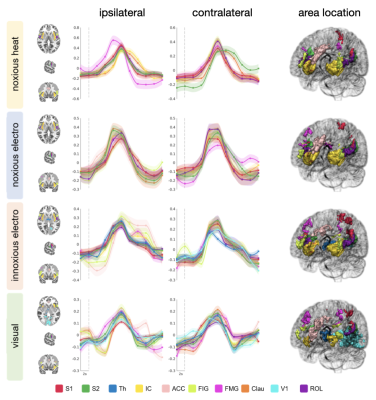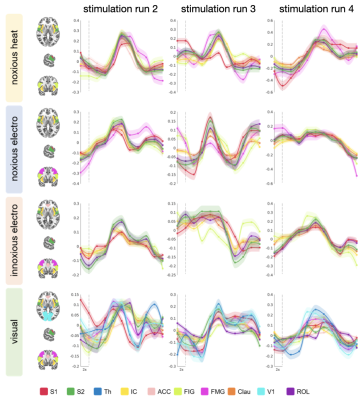Gijs J. Heij1,2, Joao Periquito1, Haopeng Han1, Antje Els1, Thoralf Niendorf1,3, and Henning M. Reimann1
1Berlin Ultrahigh Field Facility (B.U.F.F.), Max Delbrück Center for Molecular Medicine in the Helmholtz Association, Berlin, Germany, 2Spinoza Centre for Neuroimaging, Amsterdam, Netherlands, 3Experimental and Clinical Research Center (ECRC), a joint cooperation between the Charité Medical Faculty and the Max Delbrück Center for Molecular Medicine in the Helmholtz Association, Berlin, Germany
1Berlin Ultrahigh Field Facility (B.U.F.F.), Max Delbrück Center for Molecular Medicine in the Helmholtz Association, Berlin, Germany, 2Spinoza Centre for Neuroimaging, Amsterdam, Netherlands, 3Experimental and Clinical Research Center (ECRC), a joint cooperation between the Charité Medical Faculty and the Max Delbrück Center for Molecular Medicine in the Helmholtz Association, Berlin, Germany
Identifying biomarkers of pain is challenging since similar fMRI patterns are elicited by painful and equisalient non-painful stimuli at 3T. To decipher pain-specificity this work uses 7T fMRI of salient non-painful versus painful stimuli in "healthy" subjects and a pain-free phenotype.

Figure 2. HRF in the first stimulation run across stimuli and areas. All modalities activate similar regions, including S1, S2, ACC, IC, as well as other regions associated with the processing of saliency and pain (e.g., Clau, ROL). All regions exhibit canonical HRF in response to the stimuli. Abbr.: S1 = primary somatosensory cortex; S2 = secondary somatosensory cortex; Th = thalamus; IC = insular cortex; ACC = anterior cingulate cortex; FIG = frontal inferior gyrus; FMG = frontal medial gyrus; Clau = claustrum; V1 = primary visual cortex; ROL = Rolandic operculum.

Figure 3. Deviating HRF in response to repetitive stimulation. While primary sensory regions retain the canonical HRF, other regions involved in pain/saliency processing gradually disengage in response to subsequent stimulation runs. Left panel: ROI overlay of activated areas, colors matching plots (right panel). Abbr.: S1 = primary somatosensory cortex; S2 = secondary somatosensory cortex; Th = thalamus; IC = insula; ACC = anterior cingulate cortex; FIG = frontal inferior gyrus; FMG = frontal medial gyrus; Clau = claustrum; V1 = primary visual cortex; ROL = Rolandic operculum.
